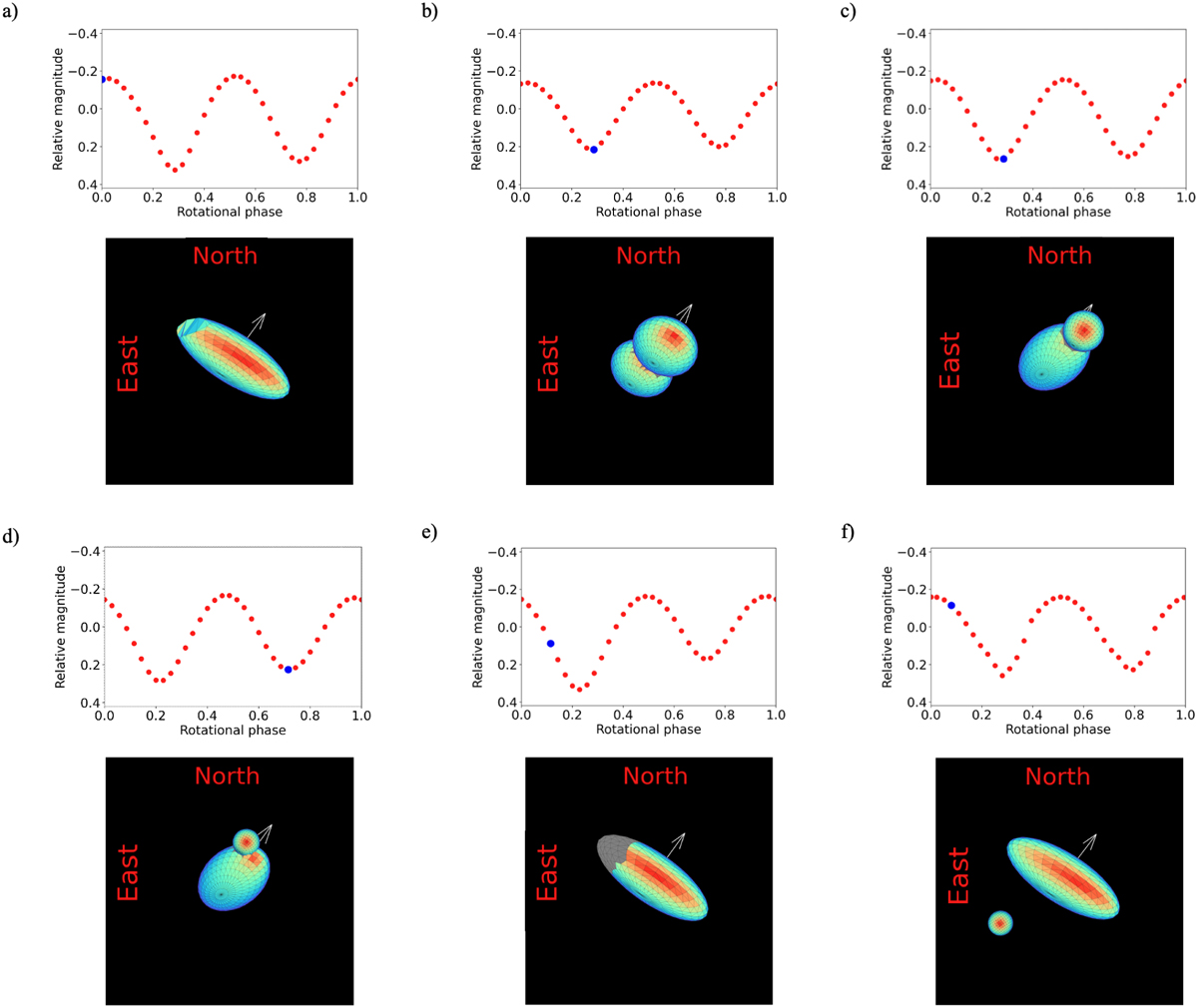Fig. D.1

Download original image
Simulated rotational light curves using the Minnaert photometric model (Eq. 10, k=2.5) for various configurations observed from Earth on November 15, 2023. a) LC for the determined ellipsoidal shape for Bienor, but with a flattening at one of its ends. This configuration generates an asymmetric light curve with a ~15% drop difference between minima. b) LC for a symmetric contact binary matching the dimensions of the ellipsoid shape model. No asymmetric light curve is generated. c) LC for an asymmetric contact binary, in which one of the lobes is smaller than theother.Noasymmetriclightcurveisgenerated.d)Similarto(c), where the smaller object is now shifted from the symmetry axis of the ellipsoid. In this case, the minima are different, with a ~20% difference in the drop. e) LC for an ellipsoid featuring a low-albedo region (half the regular albedo) in its equatorial area. In this example, up to 60% asymmetry between the minima is achieved. f) LC for an ellipsoid with a satellite of 16 % of its volume. This configuration, in which the orbital plane of the moon is inclined at 125° relative to the equatorial plane of Bienor (producing mutual eclipses), gives an asymmetric rotational with a difference of 18% drop between minima. An animation of each checked hypothesis can be accessed online. The white arrow points toward the rotation pole. The blue dot in the rotational light curve plots indicates the point corresponding to the image below. The colors indicate the value of the solar incidence angle, following the same scale shown in Fig. 7.
Current usage metrics show cumulative count of Article Views (full-text article views including HTML views, PDF and ePub downloads, according to the available data) and Abstracts Views on Vision4Press platform.
Data correspond to usage on the plateform after 2015. The current usage metrics is available 48-96 hours after online publication and is updated daily on week days.
Initial download of the metrics may take a while.


